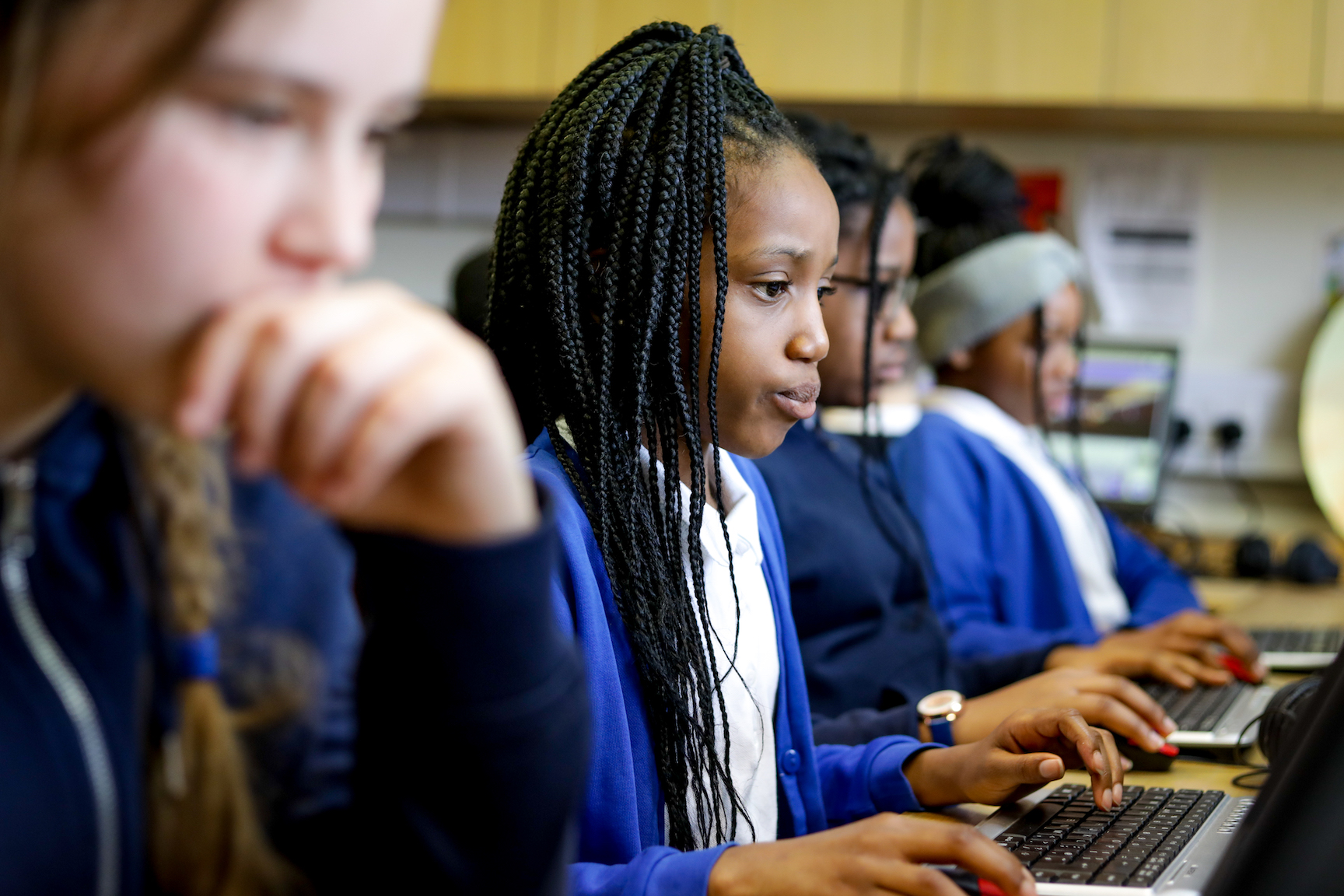Opening the box: Tools to teach young people about AI
New research by the Alan Turing Institute, published in June, shows that in the UK nearly one in four children aged 8 to 12 is using artificial intelligence (AI) tools like ChatGPT. With learners exploring these tools at such young ages, it’s more urgent than ever to develop teaching resources that help them understand how AI works.
One of the biggest challenges with AI is that it’s hard to tell how these tools function. With a chatbot, you enter a prompt and the tool returns a response, but what happens in between is invisible. For educators, that’s a problem: how can we help young people become thoughtful, creative users of AI tools if the technology feels like a closed box?


In our May research seminar, we welcomed Matti Tedre and Henriikka Vartiainen from the University of Eastern Finland. They’ve been working on how to teach about AI for years and were frustrated with existing educational platforms: many of these are either too complex, raise privacy concerns, or rely on coding skills that not all students (or teachers) have. In response, they created an award-winning, classroom-friendly tool designed to make AI technology more transparent and more hands-on.
A practical way to teach AI in schools
Matti and Henriikka began by discussing the unique challenges of teaching young learners about AI technology. Many students start with “folk theories”, for example, thinking that computers understand language like humans do. These misconceptions can be surprisingly hard to shake.
They also pointed out broader issues:
- The abstract nature of AI means there are very few research-based approaches to teaching it effectively
- Mastery of AI concepts requires sustained practice and curricular change, not just a few one-off interventions
- In countries like Finland, where programming isn’t part of the curriculum, any teaching tool must be no-code to be accessible
To address these challenges, Matti and Henriikka have spent three years co-designing tools and approaches with local schools, teachers, and over 200 students. Their approach is grounded in educational theory and a set of core AI learning principles:
- No-code for inclusivity: Removing the need for programming lowers the barrier to entry for both teachers and students
- Learner-centred co-design: Every part of the experience is developed in collaboration with schools to make sure it’s engaging and relevant
- Working with personal data: Learners create and work with their own data sets, which makes the experience more engaging and personally relevant
- Integration with school subjects: Integrating AI concepts into other subjects helps to make the uses of AI tools more concrete for learners
- Focus on specific applications: Rather than teaching about generic ‘AI’, the focus is on specific and understandable applications, such as facial recognition
- Hands-on experimentation: Practical projects help students understand tricky ideas like bias, fairness, and social impact
- Collaborative learning: Working together helps students reflect, question, and learn from each other
GenAI Teachable Machine: Opening the box
Frustrated by existing platforms that require programming skills, raise privacy concerns, or don’t allow collaboration, Matti and Henriikka’s team developed GenAI Teachable Machine: a no-code, browser-based tool designed to make key AI concepts tangible. In the central research study, the team used the tool with Finnish students in grade 4–7 (10 to 14 years of age). It’s a great introductory tool that could also be used with younger and older students.

Matti demonstrated how the tool addresses their core AI learning principles with a simple, creative project. Using hand puppets, he trained a model to recognise four distinct classes: a background, a bunny, a calm wolf, and an angry wolf. For each class, he assigned a specific action: a sound, an image, or both. This hands-on process gives students a direct line of sight from the data they might create (visuals of hand puppets) to the final behaviour of the model (outputted sounds and images). They learn about classifiers, training, and confidence levels not as abstract definitions, but as creative tools they can control.

But the learning really starts when things don’t work as expected. Students can easily open their models on their phones with an automatically created QR code and then move around the classroom to test their models. At this point, they quickly notice how fragile AI technology can be. For example, in the case of a simple recognition model trained on specific colours or features, with a change of lighting or a different shirt, the model might fail. These “failures” turn into powerful lessons. For instance, a face-recognition app trained mostly on students with blonde hair might not work well for someone with brown hair — sparking immediate conversations about bias. As Matti put it, students very quickly start asking deep questions.

GenAI Teachable Machine also allows students to apply their AI models to the physical world. By connecting to a simple, low-cost robotics kit, students can use their models to control motors, lights, and other actuators. This step into the physical world teaches fundamental concepts that are difficult to grasp in a purely virtual environment. Students learn about causality, as their model’s classifications trigger real, physical actions. They also learn about the need for a world model — an understanding of how the physical world works — and see that they must take responsibility for what happens when their abstract models have real-world consequences.

By combining a no-code platform with practical, well-designed learning experiences, Matti, Henriikka, and their team are showing what AI education can look like: hands-on, accessible, and grounded in real understanding. Their work is helping students see inside the box, and giving them the tools to think critically about the AI technologies that are becoming part of their everyday lives.
Find out more
If you’re an educator interested in including the topic of AI in your teaching, you can try GenAI Teachable Machine on its official website.
You may also be interested in our own Experience AI resources, which are designed to help you and your learners navigate the fast-moving world of AI and machine learning technologies.
Join us at our next seminar
In September, Matti and his team are returning to discuss other ways to teach young people about AI technologies.
To sign up and take part in the Matti’s seminar on Tues 9 Sept at 17:00–18:30 BST, click the button below. We’ll then send you information about joining. We hope to see you there.
The schedule of our upcoming seminars is online. You can catch up on past seminars on our previous seminars page.







No comments
Jump to the comment form